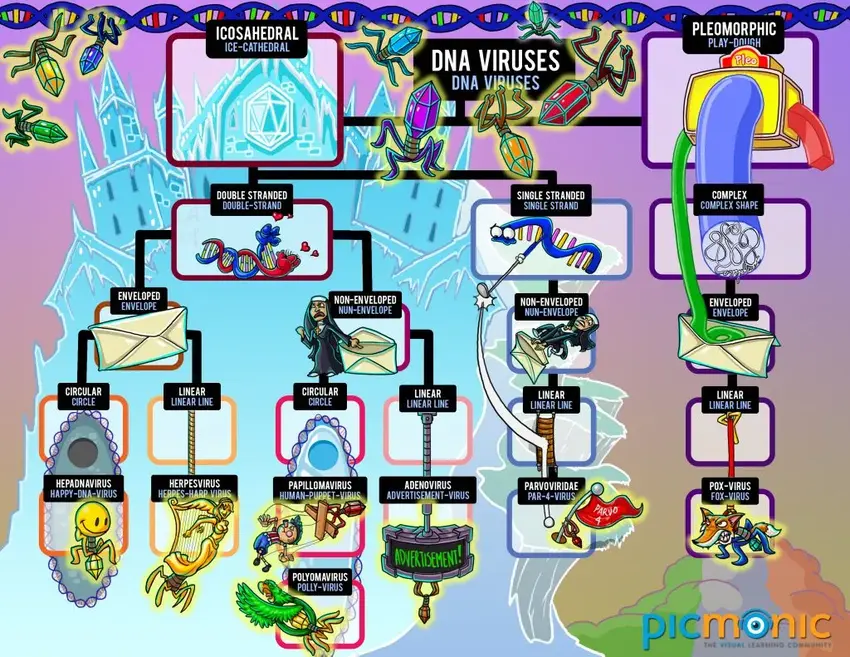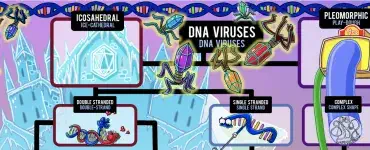This infographic classifies different DNA viruses based on their features. Use this alongside our DNA viruses mnemonics to master the topic.

What are DNA Viruses?
DNA viruses are a type of virus that store their genetic information in the form of DNA. These viruses use the host cell’s machinery to replicate and produce more and more virus particles. Examples of DNA viruses include the herpesviruses, poxviruses and adenoviruses. DNA viruses can cause a wide range of diseases in humans, animals and even plants depending on the virus type and the host it infects.
Types of DNA Viruses
There are 2 types of DNA viruses based on shape and size: Icosahedral and Pleomorphic.
Icosahedral
DNA viruses with icosahedral symmetry maintain their structural shape as icosahedrons throughout their life cycle. Some examples of icosahedral DNA viruses include:
- Adenoviruses: They have an isocahedral capsid and are responsible for respiratory infections, conjunctivitis and other illnesses in humans.
- Parvoviruses: Known for their icosahedral capsid structure, they can infect various animal species, including humans.
- Papillomaviruses: Also known for their icosahedral capsid, these viruses are responsible for conditions like warts and are associated with certain types of cancers.
Pleomorphic
DNA viruses that exhibit pleomorphism have variable shapes and sizes and mainly belong to the family Herpesviridae. They are known for their ability to change their structural appearance based on environmental factors and stages of the viral life cycle. However, they can also take on icosahedral forms during certain stages of replication.
Picmonic offers an engaging and effective way to learn about DNA viruses, by simplifying complex concepts and utilizing visual aids and mnemonics to help one retain information. Give it a try for yourself!













